Alloy Wheel Refurb Secrets
It might be road salt and winter weather or just a moment of bad luck with a pothole or kerb but the beauty of your alloy wheels hang in the balance with every journey. However, scruffy or damaged rims can easily be sorted if you take them to a wheel specialist for refurbishment. We shine a light on some alloy wheel refurb secrets.
DIY wheel refurb vs. Professional
As wheel designs and finishes have evolved, so has the scope and sophistication of the alloy wheel refurbishing process. We’re sorry to say the days of simply grabbing a roll of masking tape, last weeks newspaper and an aerosol of generic silver paint for refurbing your alloy wheels are almost over. Sure, a DIY job can make things look good on the surface, short term. But if you want a durable, long-lasting finish it is a job best left to the professionals. However, here are the tricks of the trade used to get wheels looking factory fresh again.
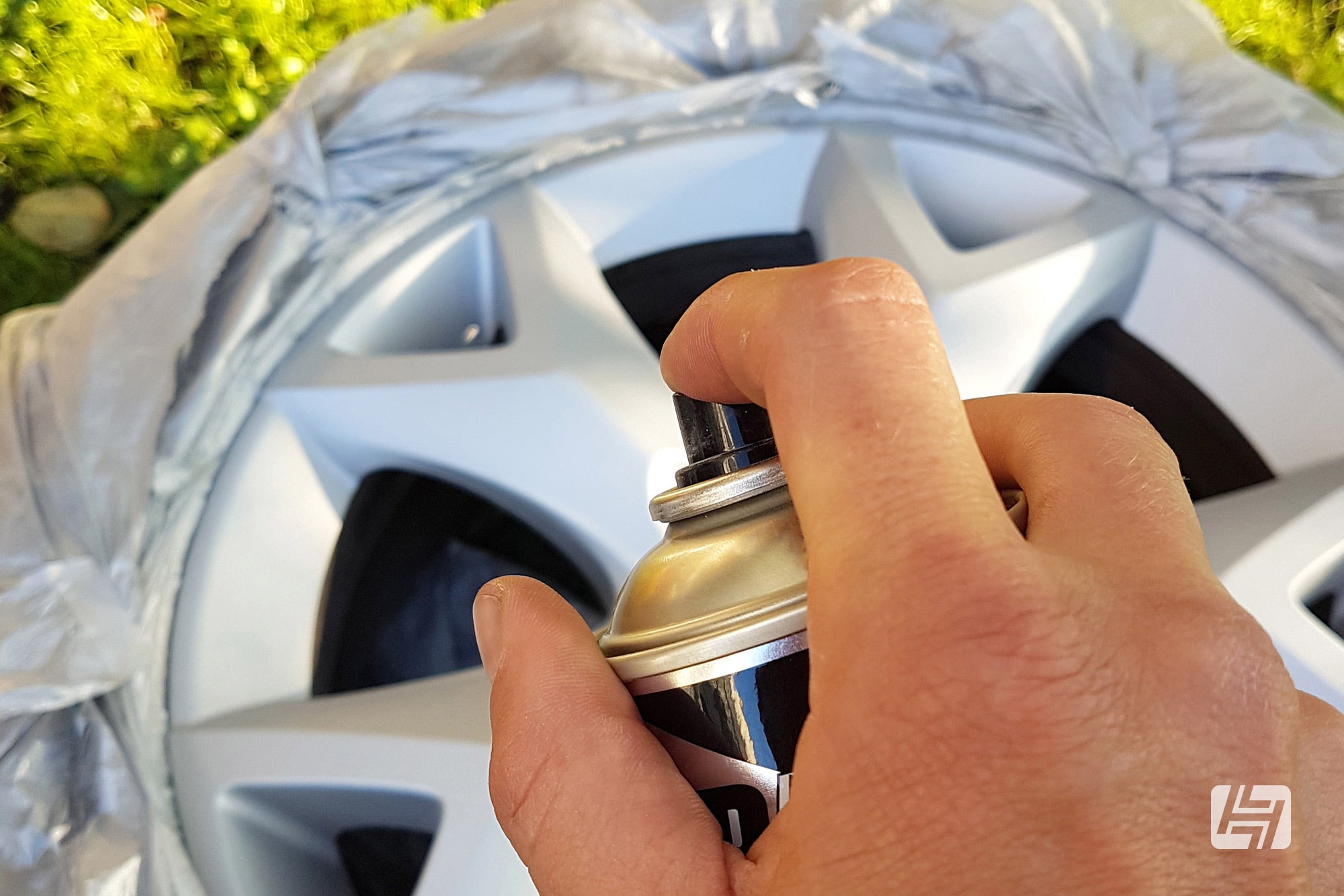
Common alloy wheel problems
Most alloy wheels have clear lacquer applied to give a smart, mirror-like finish. However, if the covering of lacquer is damaged by salt, stone chips or kerbing then it will get moisture underneath it, causing it to flake away and allowing the alloy to corrode. The flaky lacquer must be stripped off before the wheel can be painted again and re-lacquered.

Kerb kissing
We’ve all experienced that sinking feeling after accidentally nudging a kerb whilst parallel parking. With a bit of luck you have just tapped the tyre, but should you be less fortunate the impact can instantly ruin the looks of an otherwise mint rim. The good news is that kerbing scars can be either carefully ground out or, if it’s too deep, built up again with alloy weld before being shaped to the original profile. Once sprayed, it will look as good as new, without a trace of the former damage. Badly pitted alloy wheels can also be made good again with a primer filler.


Broken Seal
Often wrongly diagnosed as a puncture or leaking valve, corrosion around the inside of the rim will spoil the airtight seal with the tyre, causing a gradual loss of pressure. Such corrosion is often caused by hammer on wheel weights being applied to the rim lip. This damage to the paint or lacquer coating, allows water to penetrate the metal beneath. The remedy is to gently remove the surface corrosion with a grinder or wire wheel then fit stick on surface mounted weights to the inner face of the wheel instead.

Split rim resurrection
The iconic BBS split rims were a factory option on Volkswagens sportier models from the 1980s and still look great today. However, they’re a nightmare to refurbish properly as the rims have to be broken down into their individual components before they can be worked on. Many use titanium bolts which can snap and consequently require drilling out. Still, if you’re after a timeless VW GTI look, getting them properly repaired is well worth the effort in both visual and financial terms. You can also get one-piece rims, such as the Lenso BSX and Rota wheels which mimic this style with dummy bolts around the edge for effect. However, they’re no easier to work on when it comes to refurbishment, as the bolts still have to be removed during the stripping process and they often snap off.

Keeping the shine
Shiny, polished alloy finishes look fabulous but aren’t durable because the lacquer is applied to the bare alloy and doesn’t tend to stick very well. When the lacquer begins to flake off, the alloy underneath quickly corrodes making the wheel look scruffy. Re-machining the wheel would cost a fortune, so the best solution here is to have the wheels finished in a combination of wet paint and powder or chrome powder to give a long-lasting finish that looks very similar to the original polished effect.
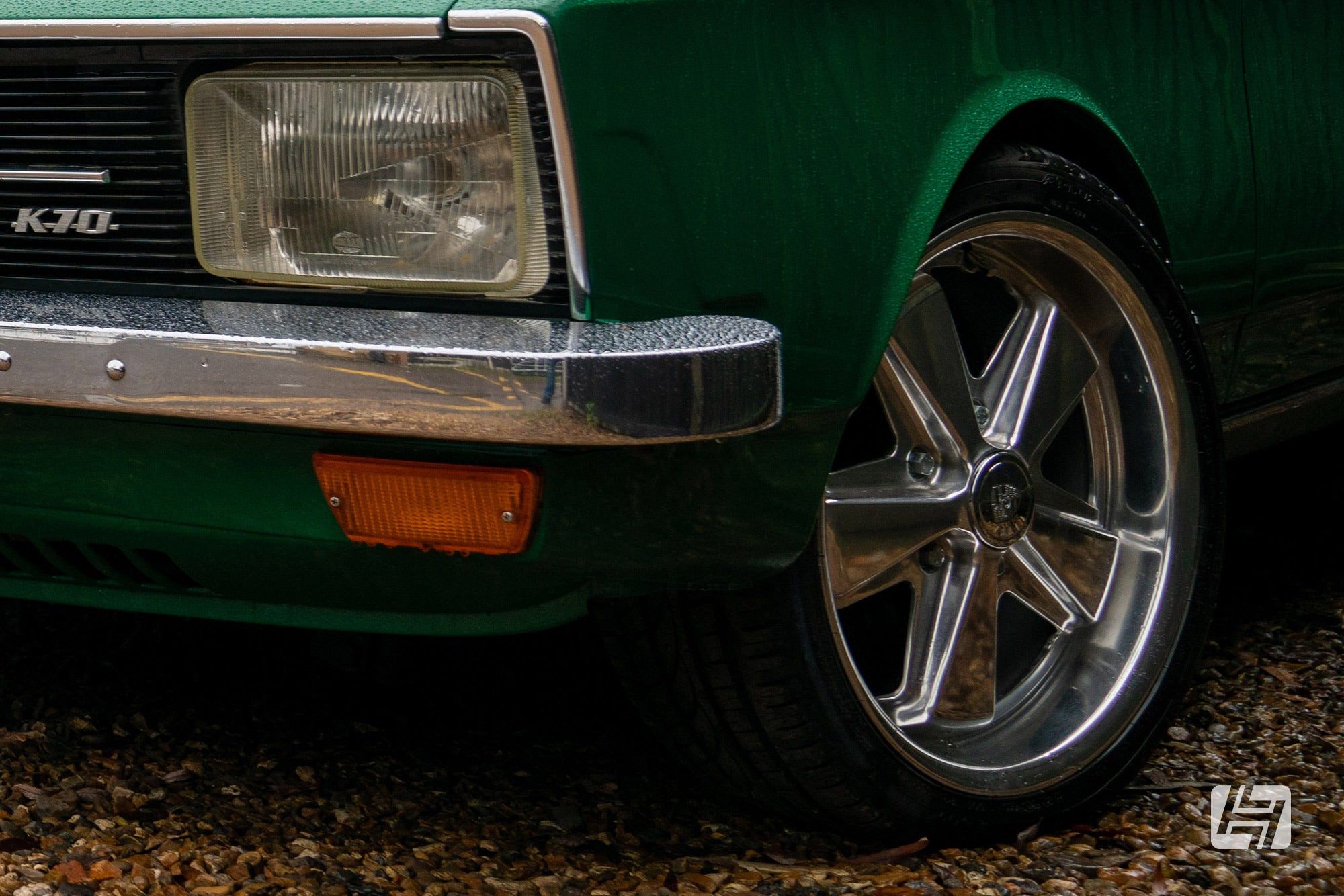
The process of refurbing alloy wheels
Once your tyres have been removed, your wheels at the hands of a specialist are either chemically stripped then washed in a neutral solution or placed in a blasting cabinet to remove all the old paint, lacquer and brake dust. They are then inspected for any pitting or damage to the rim caused by kerbing, before being repaired.

Powder Coating Wheels
Provided your wheels are straight and crack-free, they are usually etch primed then pre-heated in an oven to de-gas the casting. This will expel any moisture and prepare the surface to accept the first coating of powder which is applied electrostatically. This is where the wheel is negatively charged and the gun positively charged to create a better bond. The heat of the wheel makes the powder melt then cure almost immediately, which is especially important with spoked wheels, to get the coating even without generating runs. The wheel is then put back into the oven to cure before being given a coloured powder topcoat. At this point, a wet coat finish might be introduced to give depth to the wheel. Lastly, the wheel is sprayed with a clear lacquer before being given a further stint in the oven to truly bake on the paint for a totally durable finish.
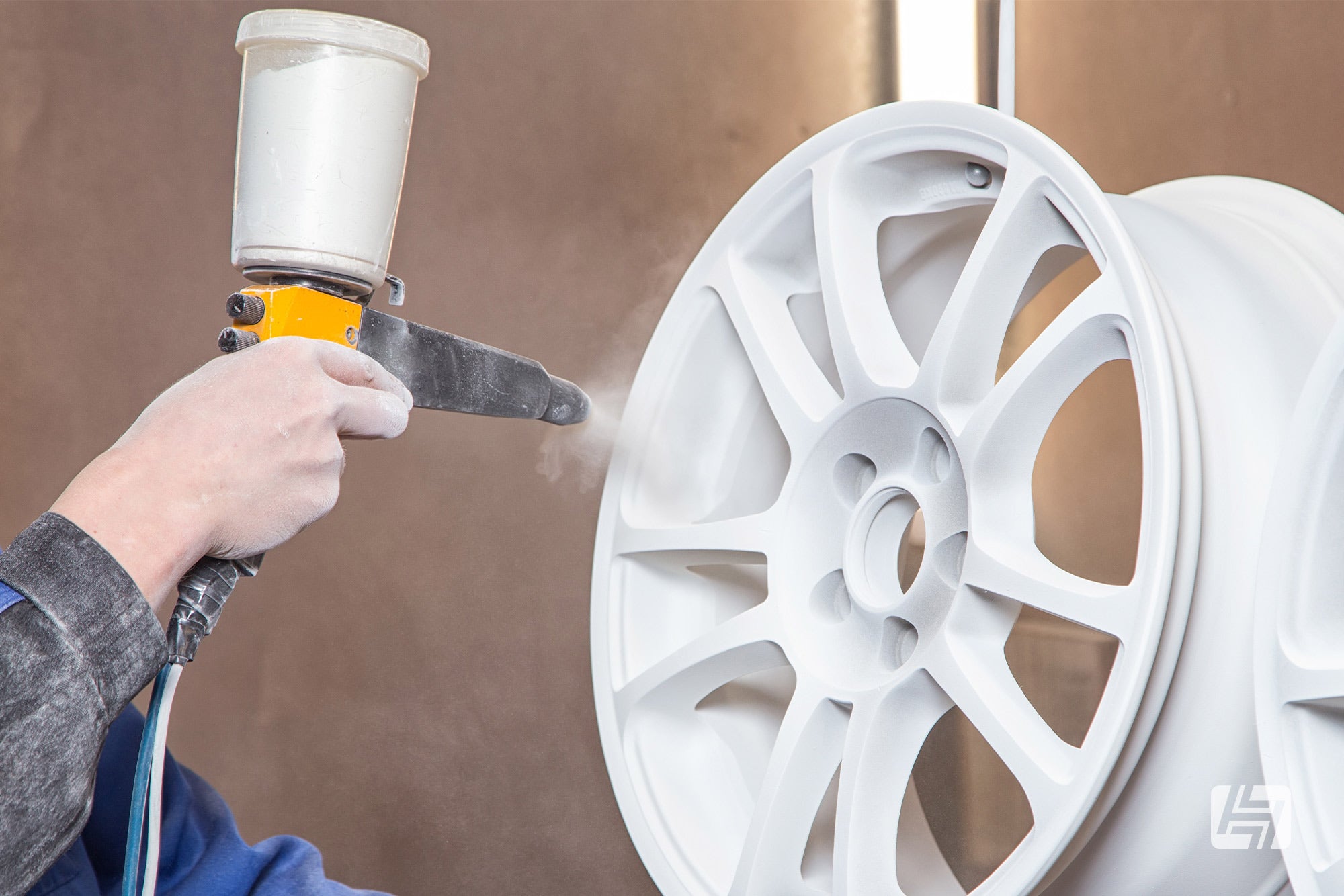
Rim repairs
In truth, there’s little that a skilled wheel refurbisher with the right workshop equipment can’t do to restore a rim to its original condition. The only damage that can’t be fixed is wheel buckles from the wheel centre, which are often caused by a sliding collision where the wheels have hit a kerb sideways. If this is the case, then you are left with a trip to your local metal works to recycle it, or bolt it to the garage wall as an ornament.
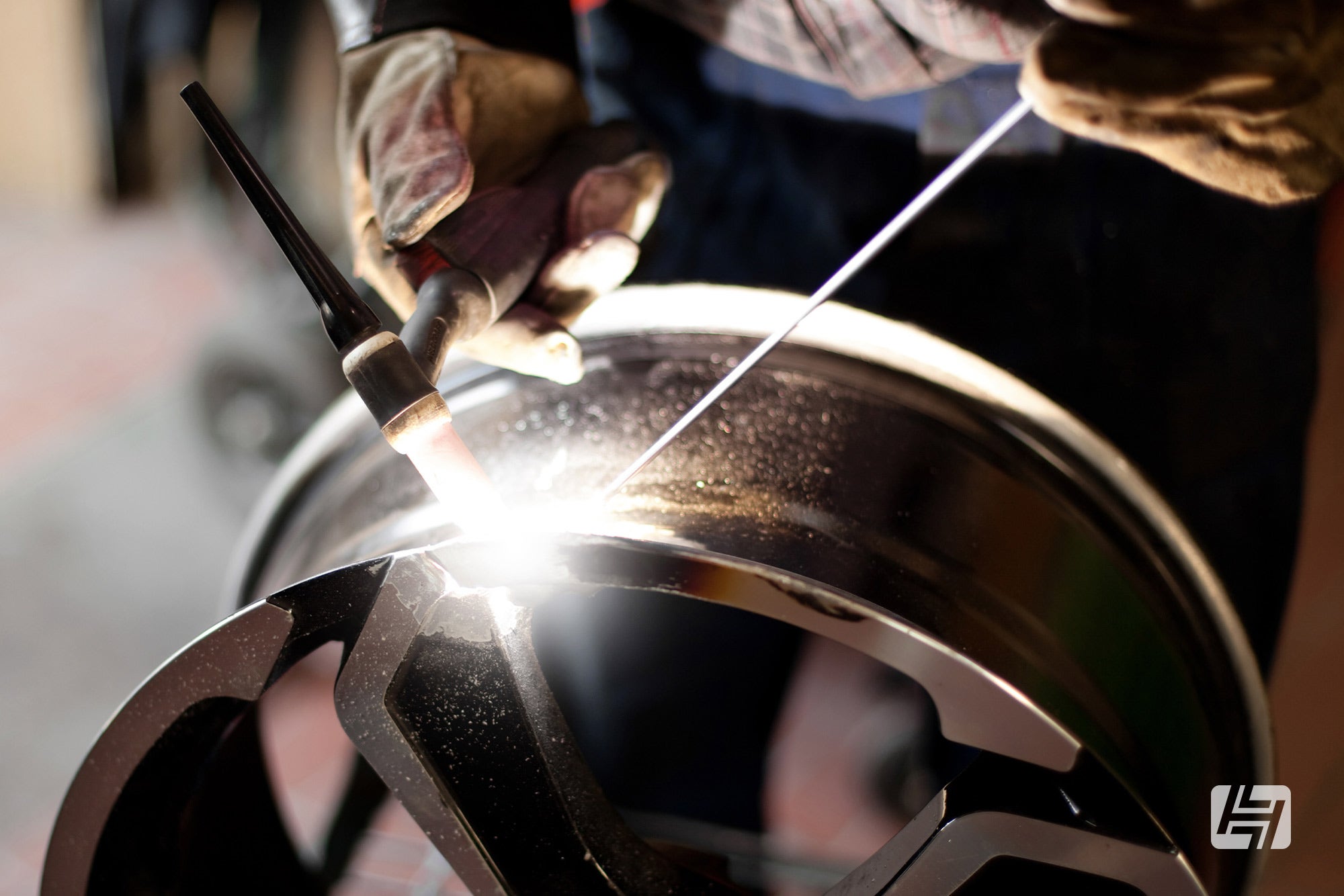
Fifty shades of Silver!
Don’t be fooled into assuming that all silver alloy wheel finishes are the same. Some silvers are brighter than others and some have different sized metallic particles. Your local wheel refurbisher will have swatches with all colour options and be able to advise on the correct silver to match the original specification.

Personalising your wheels
While there’s nothing wrong with opting for a factory OE finish, there’s lots of scope for choosing something a bit more unique. As for popular choices at the moment, silver over black (silver with black on the inside edges) is good because it doesn’t show brake dust. Meanwhile, white wheels look good on a brightly coloured car but are tricky to keep clean, and black or anthracite tends to suit performance vehicles. Have a browse through social media or visit your local specialist to see what finishes they offer to get a bit of inspiration.
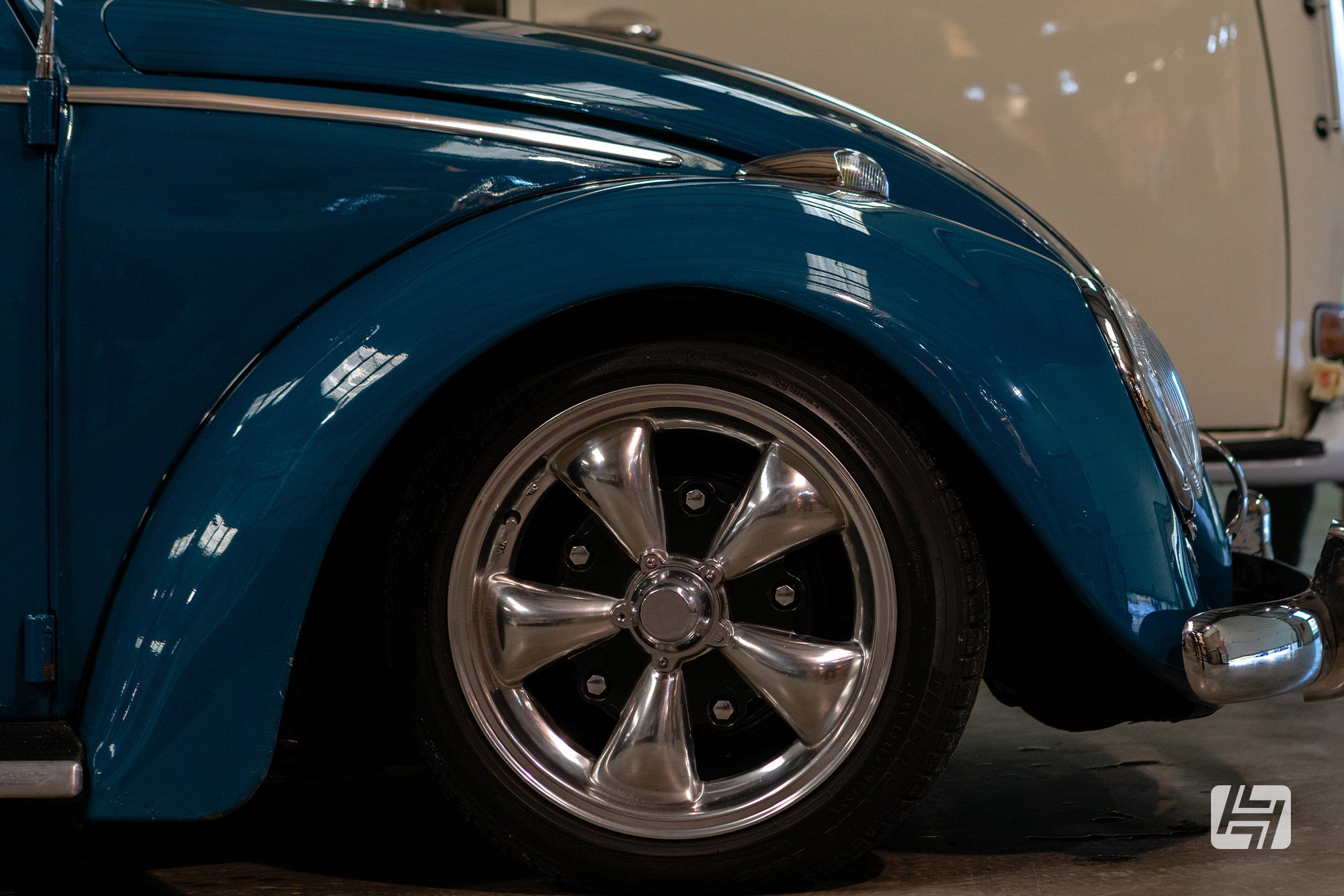
How much?
The price of carrying out a 17" single-piece wheel refurb is around £90 a corner, though you’ll pay more for a custom finish or repair work. It's not cheap, but if you’ve got a rare or cherished set of rims it will definitely be worth doing. The cost of rim repairs will depend on their severity and any reputable establishment will give you a call should things be more serious than first thought, giving you the costs and options available before Make some calls, but don’t necessarily go for the cheapest option, it’s best to go by recommendation. Just like other tradespeople, the best wheel specialists always have a bit of a backlog, but get them to agree on a time frame. If you don't have a spare set of rims, ask if they can securely accommodate the vehicle whilst they work on the wheels.
Or just buy new...
If all of this is too much effort or sounding too expensive to leave you with the same look and style that you've always had, then perhaps a new set of wheels is the answer! We offer a huge range of aircooled VW wheels and a selection of classic watercooled VW wheels, not to mention a nice choice of load rated T4 wheels too. Ian / Andy




 Beetle
Beetle
 T2 Bay
T2 Bay
 T2 Split
T2 Split
 T25
T25
 Transporter T4
Transporter T4
 Transporter T5
Transporter T5
 Golf Mk1
Golf Mk1
 Golf Mk2
Golf Mk2


 911
911
 996
996
 997
997
 986 Boxster
986 Boxster
 987 Boxster
987 Boxster
 912
912
 944
944
 924
924


 Defender
Defender
 Discovery Series 1
Discovery Series 1
 Discovery 2
Discovery 2
 Series 1, 2 & 3
Series 1, 2 & 3
 Freelander
Freelander
 Freelander 2
Freelander 2



